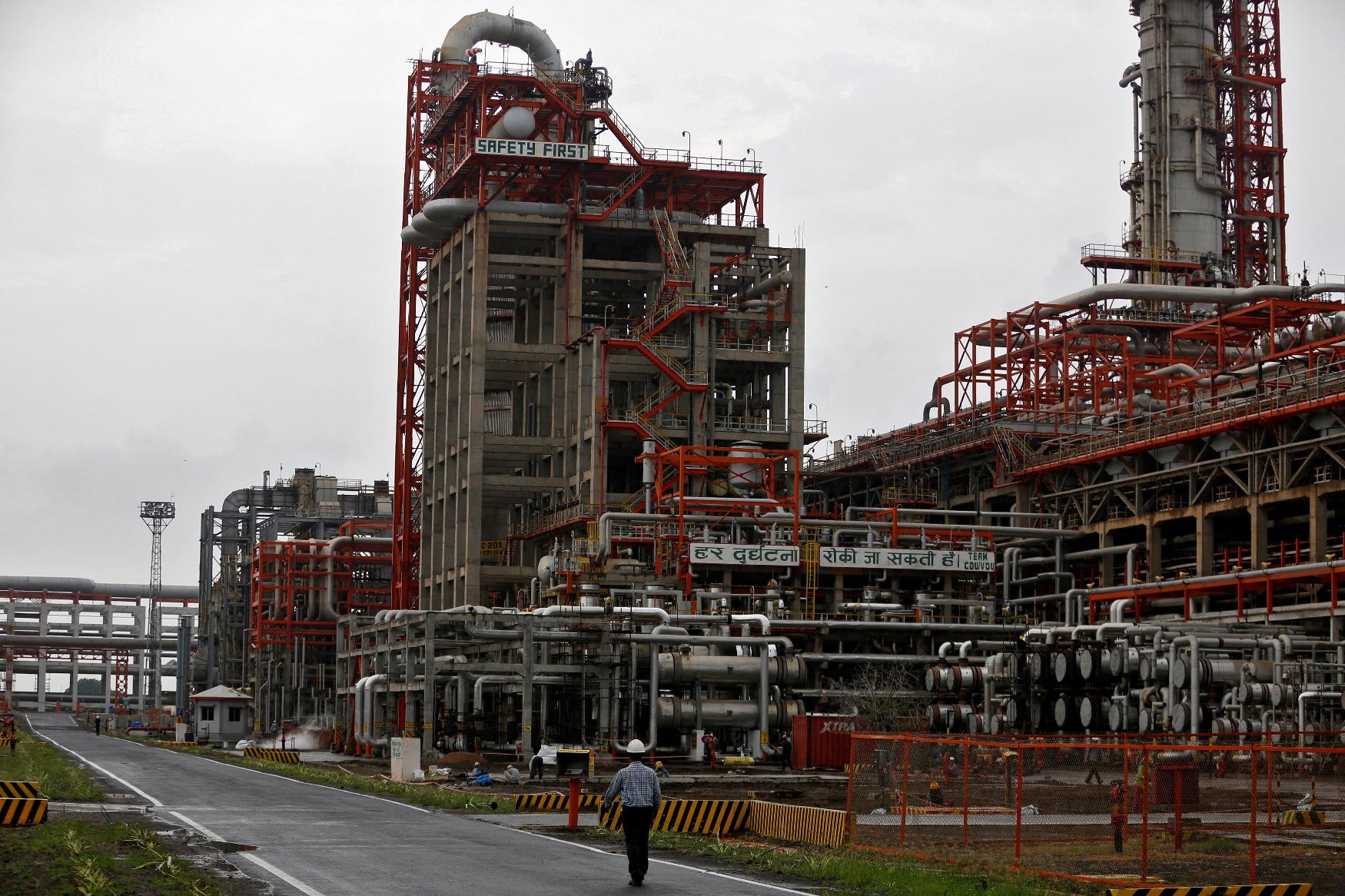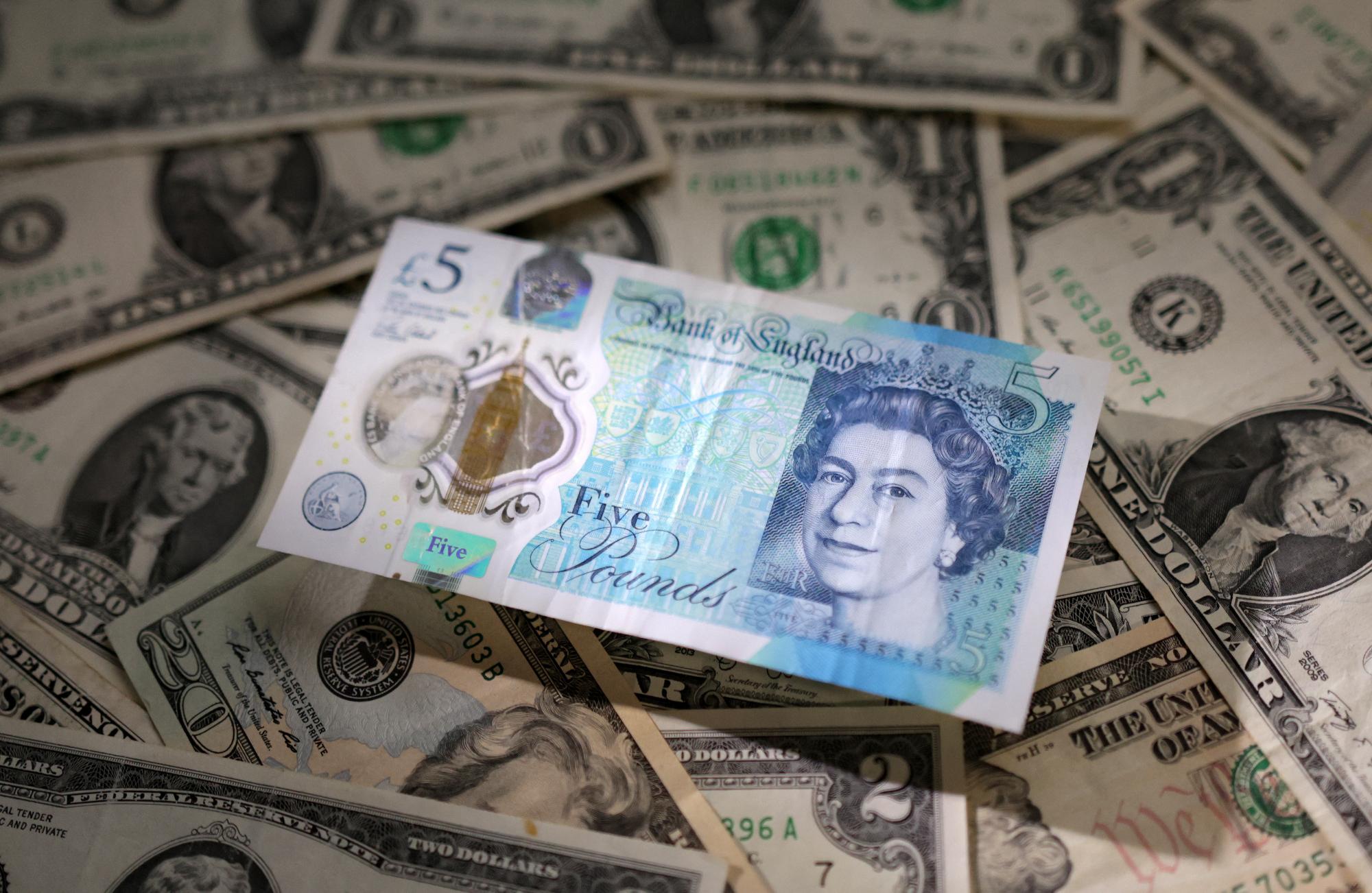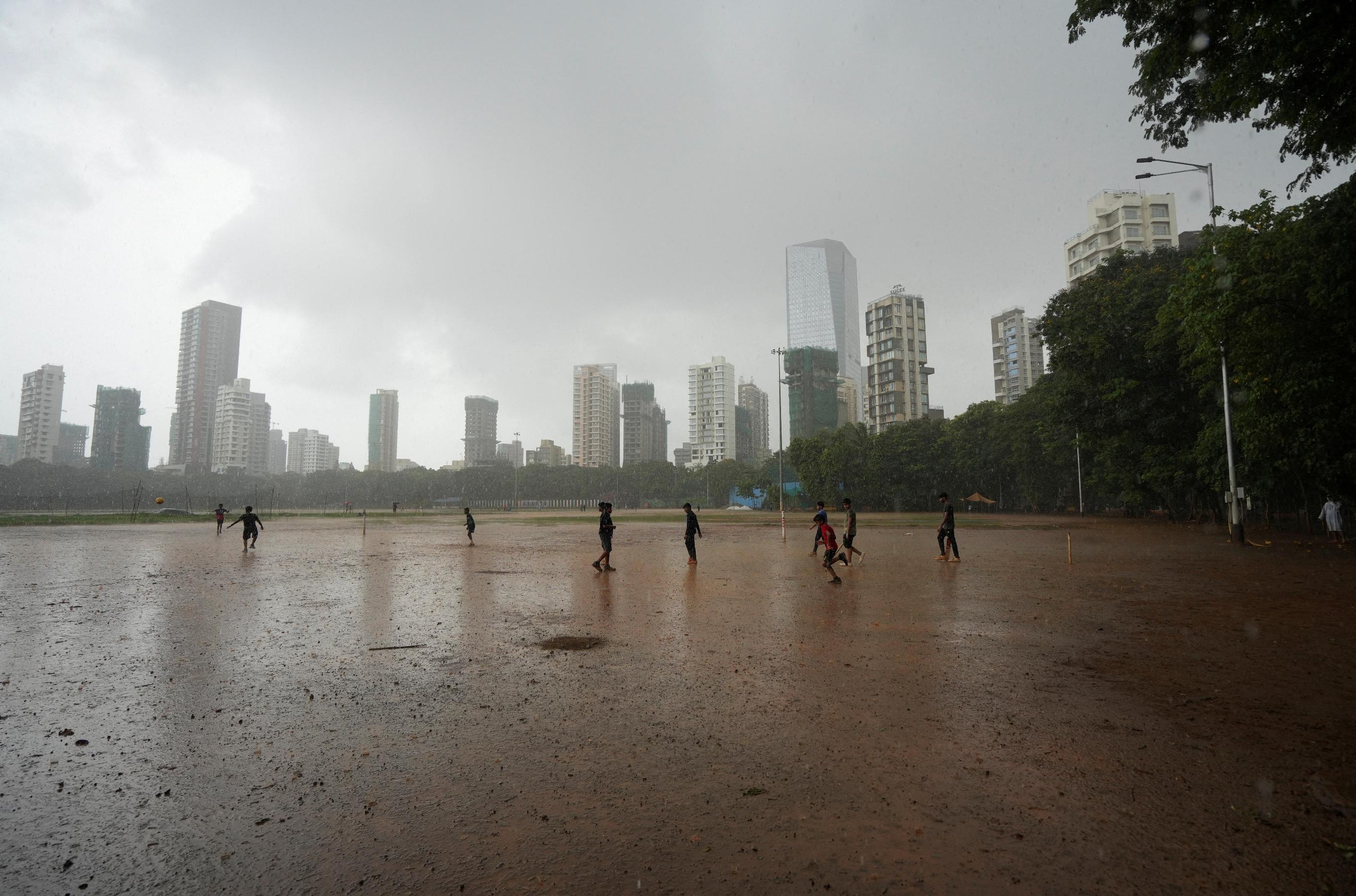
2024-08-29 12:00
LAUNCESTON, Australia, Aug 29 (Reuters) - Asia's imports of crude oil lifted in August from the two-year low in July as top-importing heavyweights China, India, South Korea and Japan brought in more barrels. Total imports for August are expected to be 26.74 million barrels per day (bpd), up from July's 24.56 million bpd, according to data compiled by LSEG Oil Research. While a 2.18 million bpd increase seems large, it's worth noting that July's imports were the weakest since the same month in 2022, and that the August total is still only the fifth-highest out of the eight months so far in 2024. The recovery in August arrivals is largely due to a 1.05 million bpd increase in China, the world's biggest crude importer. China's August imports are estimated by LSEG at 11.02 million bpd, up from July's official customs number of 9.97 million bpd, which was the lowest on a daily basis since September 2022. China's refineries tend to increase crude purchases in the third quarter in order to build up stockpiles of refined products to meet peak winter demand. However, August's imports are also likely to have been boosted by the lower global oil prices that prevailed when the cargoes would have been arranged. Benchmark Brent futures were in a downtrend from the high so far of $92.18 a barrel on April 12, to a low of $76.76 on June 4, a time window that would have coincided with the purchase of cargoes for August delivery into Asia. After the June low, crude prices rallied to a high of $87.95 a barrel by July 5, before softening again to end at $78.46 on Wednesday. It remains to be seen whether the increase in prices in July will translate into weaker imports in September in the traditionally more price sensitive importers such as India and China. India's August imports showed only a modest increase from July, with LSEG estimated Asia's second-biggest crude buyer, brought in 4.83 million bpd, up from July's 4.58 million bpd. The monsoon season is likely to have curbed some appetite among India's refiners, and export-focused plants may also have been concerned about the soft regional demand for products such as gasoline and diesel. South Korea, Asia's third-biggest oil importer, is forecast to land 2.84 million bpd in August, up from 2.65 million in July and 2.49 million in June. Fourth-ranked Japan is expected to see imports of 2.39 million bpd in August, up 26% from July's 1.90 million bpd and the strongest month since April. Both of these developed North Asian economies tend to increase imports in the third quarter in order to lift product inventories ahead of winter. SAUDI SUPPLY GAIN On the supply side, Saudi Arabia saw some recovery in August, with LSEG estimating Asia's imports from the world's biggest exporter were 4.89 million bpd, up from 4.60 million bpd in July and 4.63 million in June. Demand for Saudi oil may have been boosted by Saudi Aramco's decision to lower its official selling prices (OSPs) for August-loading cargoes, with the premium for its benchmark Arab Light grade dropping 60 cents from July to $1.80 a barrel above Oman/Dubai quotes. Asia's imports from Russia slipped to 3.60 million bpd in August from 3.71 million bpd in July and 4.19 million bpd in June, largely because India took fewer cargoes. India's imports of Russian oil are estimated at 1.73 million bpd in August, down from 1.94 million in July, while arrivals from the United States rose to 360,000 bpd from 190,000 bpd in July. This is likely a reflection of the discount of U.S. crudes such as West Texas Intermediate to those priced against Brent or against Middle East benchmarks such as Oman and Dubai. Asia's total imports from the United States are expected to rise to 1.86 million bpd in August from 1.65 million bpd in July, making it the fifth-largest supplier of crude to the region behind Saudi Arabia, Russia, the United Arab Emirates and Iraq. The opinions expressed here are those of the author, a columnist for Reuters. Sign up here. https://www.reuters.com/markets/commodities/asias-crude-oil-imports-stage-modest-recovery-august-russell-2024-08-29/

2024-08-29 11:39
CONCEPCION, Bolivia, Aug 29 (Reuters) - In Bolivia's lowland region of Santa Cruz, farmer Mario Guasasi packed up his belongings this week, putting mattresses, food, and bed frames into a truck in a bid to escape rapidly approaching fires that are among the worst the country has seen. The southern hemisphere nation has recorded the largest number of outbreaks of wildfires in 14 years, with 3 million hectares (7.5 million acres) of land burned already this year and peak fire season still ahead. Neighboring Brazil is also suffering a torrid beginning to the season, with blazes in major cities and in the Amazon rainforest off to their worst start in 20 years, after a record drought aggravated by global warming. "We are evacuating because of the fire," Guasasi told Reuters outside his home in Concepcion, on the edge of the Amazon rainforest and one of the worst affected areas of Bolivia. "We are afraid of the fire getting here. My house might burn, and then what will we do?" Bolivia has registered 36,800 fire outbreaks so far this year, second only to a record year for blazes in 2010, according to satellite data from Brazil's space research agency Inpe, which monitors fires across the continent. Yellow-suited firefighters have been trying to counter the blazes and evacuate villages as fires have torn through the landscape. "The fire front goes on for miles," said commander Wilson Lupa, who heads a firefighting operation, as foliage burned behind him and smoke rose into the sky. Milton Villavicencio Duran, who works to restore wooden pews and statues in churches damaged by the fires, told Reuters that at times the smog was so thick the landscape was entirely obscured. "The sky is covered with smoke," he said. Around 3 million hectares have burned as of August and the total figure for 2024 is expected to rise sharply, with the season lasting until December. 'THE FIRE BURNS EVERYTHING' South America overall is bracing for an intense fire season that usually peaks in August and September before spring rains arrive. Unusually early and intense fires followed a drought that has dried out vegetation in much of the region. In Bolivia, walls of flames engulfed tracts of dry land in Concepcion as a single helicopter overhead used a bucket to tackle the blazes. With its firefighting teams stretched, Bolivia's government has called for international aid. Indigenous volunteers tried to protect land they use to grow crops and feed livestock near the Chiquitano forest north of Concepcion that extends towards Brazil and Paraguay. "We live from agriculture and now nothing grows, everything is dry," said Maria Suarez Moconho, an Indigenous community chief who leads the group of volunteers and said conditions were having a devastating impact on water and food supplies. "The fire burns everything." The country has seen major land clearances in the last decade as production of gas, Bolivia's former top export, has dwindled. Instead focus has turned towards crops such as soy and cattle farming, much of which is sent to China. The government has granted more permissions to use slash-and-burn methods to clear land, boosting beef production to a record last year, official data show. Fines for illegal burning - less than 2 bolivianos (30 U.S. cents) per hectare - are too low, said climate policy specialist Pablo Solon. Land development had led to a situation where "more and more land is burned," said Cecilia Requena, an opposition lawmaker and environmental committee head. "Often these become completely uncontrolled forest fires," she said. Vice Minister of Defense Juan Carlos Calvimontes confirmed on Wednesday during a press conference that almost 68% of the burned areas were pastures. "Who burns pasture? You know this is from cattle ranching," he said. Adalid Ordonez Palachay, parish priest of Concepcion cathedral, said the blazes threatened the lowland region's distinctive wooden churches, burning artifacts and buildings. "We live in constant danger from the fires," he said. Sign up here. https://www.reuters.com/world/americas/bolivian-farmers-pack-up-flee-wildfires-burn-woodland-2024-08-29/

2024-08-29 11:38
Sterling up almost 4% this year vs dollar Momentum could now stall, say analysts Pound vulnerable to carry trade risks and rates views shifting Pound vulnerable to change in interest rate bets, say analysts LONDON, Aug 29 (Reuters) - Sterling has hit roughly 2-1/2 years highs against the dollar and is flying high versus the euro, in moves analysts warn are underpinned by speculative interest rate bets that could unravel fast in markets still shaken by early August turmoil. At around $1.32, Britain's pound has soared beyond most analysts' target prices for this year. It's a stunning recovery from its slump to record lows near $1.03 after former UK prime minister Liz Truss' September 2022 mini-Budget. Predictions the Bank of England will keep interest rates high for longer than in the United States and the euro zone explain the rally but also make sterling vulnerable if monetary policy forecasts change, currency dealers and analysts said. "We're going to see deviations in (predictions of) easing paths being priced over time and that should lead to increased volatility," Monex Europe senior market analyst Nick Rees said. Sterling's current value, he added, reflected expected UK economic growth but had ignored the risk of the BoE cutting rates faster than markets predict right now. Traders predict UK rates will be higher than in the U.S. in a year's time. The BoE cut rates by 25 basis points on Aug. 1 to 5% and money markets price in a further 40 bps of cuts by year-end. The European Central Bank is expected to ease by 65 bps to 3% over the same period. CARRY ON BUYING? Traders are wary of sudden sell-offs of higher-interest rate currencies after this month's implosion of an estimated $250 billion in so-called carry trades, where speculators borrowed Japanese yen to buy higher-return assets. A massive unwind of yen-funded positions just weeks ago wreaked damage on higher yielding currencies from Mexico's peso to South Africa's rand, putting sterling's popularity as a carry trade purchase in focus. At least three major investment banks are recommending trades that involve using the currently weak but often unpredictable Swiss franc as a funding vehicle to buy sterling, their marketing materials showed. "This is a pennies in front of a steamroller trade," Capital Economics head of FX markets Jonas Goltermann said, referring to investments that can generate small steady profits but come with the risk of sudden, catastrophic losses. Debt funded carry trades generally prosper when markets are calm and can rapidly run into trouble when markets turn volatile or interest rate expectations change. According to a UBS analysis of futures contracts, speculative traders using borrowed funds have dominated bets that sterling will appreciate against the dollar for more than a year, in a trade currently worth $3.5 billion. Mainstream asset managers hold a $700 million net short position, the same data showed, suggesting that these longer term investors have a negative view on sterling overall. RATE BETS Sterling is almost 3% higher against the euro year-to-date and the best performing major currency against the dollar with a rise of 4%. It has been bolstered by hopes for improved political stability in Britain following July's big election win for the Labour Party, as well as by the economy rebounding from a shallow recession in 2023. Still, the new government's first Budget in October poses risks of spending cuts or tax rises that may keep Britain's high national debt under control but could hurt growth. "All the good news for the pound is now in the price, and seemingly none of the bad news," Goltermann said. Rob Wood, chief UK economist at Pantheon Macroeconomics, said the BoE keeping rates high could suppress the economy in the years ahead, potentially knocking the pound. EDGY UBS's Head of G10 FX Strategy Shahab Jalinoos said foreign exchange markets remained tense after the early August yen shock and could become more so as November's U.S. presidential election approaches. Carry trades tend to prosper when markets are calm, making the pound vulnerable to future bouts of volatility, he said. "But the positioning is not so enormous as to preclude the possibility of sterling recovering once the dust settles again." The pound's performance against the dollar was probably also exaggerated by thin summer trading conditions, Monex's Rees said. The Bank of International Settlements warned this week that while currency markets were not turbulent right now, large positions built up in periods of calm could unwind quickly , opens new tab when volatility rises. Societe Generale's chief currency strategist Kit Juckes, said the pound had also benefited from political upheaval in France undermining the euro. If this perceived risk fades, sterling could weaken "pretty easily" to 86 pence per euro from around 84 pence currently, he said. Sign up here. https://www.reuters.com/markets/currencies/sterlings-stunning-rally-keeps-twitchy-currency-markets-edge-2024-08-29/

2024-08-29 11:01
MUMBAI, Aug 29 (Reuters) - India's monsoon rains are likely to be prolonged into late September this year due to the development of a low-pressure system in the middle of the month, two weather department officials told Reuters. Above-normal rainfall due to the delayed withdrawal of the monsoon could damage India's summer-sown crops like rice, cotton, soybean, corn, and pulses, which are typically harvested from mid-September. The crop damage could lead to food inflation, but the rains may also result in higher soil moisture, benefiting the planting of winter-sown crops such as wheat, rapeseed, and chickpea. "There is an increased probability of a low-pressure system developing in the third week of September, which could delay the withdrawal of the monsoon," said a senior official of the India Meteorological Department, who sought anonymity as the matter is sensitive. India, the world’s second-largest producer of wheat, sugar, and rice, has imposed various curbs on the export of these farm commodities, and any losses due to excessive rainfall could prompt New Delhi to extend those curbs. The monsoon generally begins in June and starts to retreat by Sept. 17 from northwestern parts of the country, ending across the country by mid-October. The lifeblood of a nearly $3.5-trillion economy, the annual monsoon brings almost 70% of the rain India needs to water farms and replenish reservoirs and aquifers. Without irrigation, nearly half the farmland in the country depends on the rains that usually run from June to September. Monsoon rainfall in September and October could be influenced by La Nina weather conditions, which are likely to develop from the next month, said another IMD official. In the past, when La Nina develops during the second half of the monsoon season, it has led to a delayed monsoon withdrawal, said the official, adding that "this year, we could see a similar pattern". The two sources shared their assessment ahead of the IMD's monthly forecast for September rainfall and monsoon withdrawal, which is scheduled for this weekend. India has received 7% more rainfall than average since the monsoon season began on June 1. However, some states have experienced as much as 66% more rainfall than average, leading to flooding. Heavy rains during the third and fourth weeks of September and early October could affect early sown crops that are nearing harvest, said Ashwini Bansod, vice president of commodities research at Phillip Capital India. "The impact would depend on the intensity and duration of the rainfall. If the rains persist into the first half of October, it could cause more damage if fields get flooded," Bansod said. Sign up here. https://www.reuters.com/world/india/indias-monsoon-expected-be-prolonged-threatening-ripe-crops-sources-say-2024-08-29/

2024-08-29 10:49
MOSCOW, Aug 29 (Reuters) - Another key interest rate hike in September is not a certainty, as economic growth and lending are slowing down, a senior central bank official said on Thursday in the most dovish comments from the regulator since the July rate hike. The regulator raised its benchmark rate by 200 basis points to 18% in July, the highest level in more than two years, citing economic overheating and high inflation rates as the main reasons. The central bank's board will next meet on Sept. 13. "The board will assess the feasibility of an additional key rate increase at upcoming meetings. This means that an increase at the next meeting is not predetermined, it will depend on the incoming data," Deputy Governor Alexei Zabotkin told a news conference. Zabotkin said consumer and corporate lending have been slowing down in August, but preliminary inflation data provided no signs that price growth has been moderating. The central bank published a draft of its monetary policy guidelines for the next three years on Thursday, stating that it would need to maintain a tight monetary policy for a prolonged period to achieve a sustainable decrease in inflation, which is now running at over 9%. In a high-risk scenario outlined in the guidelines, the regulator sees inflation rising to 13% to 15% in 2025. In the base scenario, inflation will fall to 4.0% to 4.5% in 2025 as a result of the central bank's measures, after which it will stay near the 4% target level. The release of the guidelines follows a strong set of economic data published on Wednesday, showing solid growth in many sectors and high investment rates, prompting officials to hint at a brighter outlook for the year despite Western sanctions. The central bank also predicted a fall in imports in 2024, due to problems with cross-border payments and logistical difficulties linked to Western sanctions. Russian companies and officials have been complaining about delays in transactions with China for months after its banks grew more cautious and tightened compliance in response to Western threats of secondary sanctions for dealing with Russia. "Imports will decrease in 2024 due to the strengthening of sanctions barriers related to payments and logistics," the central bank said, although it predicted that the situation would improve in the medium term. Sign up here. https://www.reuters.com/markets/europe/russian-cbank-sees-imports-falling-2024-due-western-sanctions-2024-08-29/

2024-08-29 10:42
Aug 29 (Reuters) - China's CNOOC Ltd (0883.HK) , opens new tab, believes fossil fuel will be a stabilising factor in global energy demand for the foreseeable future, as the offshore oil and gas major sets a record output target for 2024, its executives said on Thursday. The state-run company aimed to pump 700 million to 720 million barrels of oil equivalent for 2024, or 3% to 6% above the level of last year, CNOOC told an earnings briefing after posting a record interim profit. CNOOC expects domestic natural gas production to maintain strong growth through 2030 and stands ready to monetise vast gas resources in Guyana, Chief Executive Zhou Xinhuai told the briefing. The company is part of the Exxon Mobil-led Stabroek offshore Guyana joint venture that has discovered some 11.6 billion barrels in oil and gas so far. A recent award to develop Block 7 in Iraq could lead to a new large discovery, although the company will first need sufficient appraisals to understand its reserve potential, Zhou added. "CNOOC will maintain our high standards in picking new assets globally," Zhou said. On new energy, Zhou said the company would focus on investing in projects that offer the best cost advantages, for example the commissioning of the world's first 5-megawatt offshore high-temperature flue gas waste heat power plant. CNOOC said it expected oil prices to keep in a range of $75 to $85 a barrel for the second half of 2024. It targets annual capital expenditure at 125 billion yuan to 135 billion yuan ($18 billion to $19 billion), versus last year's 129.6 billion. Its interim earnings at $11.2 billion were slightly below the $12.4 billion reported by PetroChina, Asia's largest oil and gas producer, but more than double those of refining giant Sinopec, at $5.2 billion. ($1=7.0942 Chinese yuan renminbi) Sign up here. https://www.reuters.com/business/energy/chinas-cnooc-says-fossil-fuel-crucial-foreseeable-future-2024-08-29/
